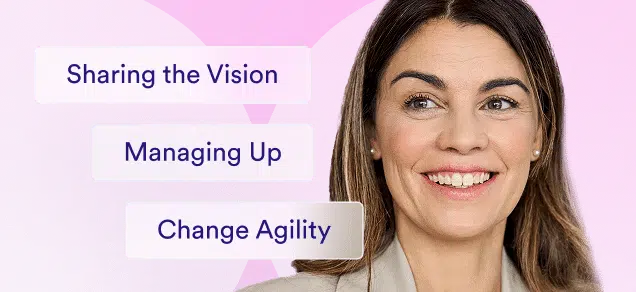What is an Executive Sponsor?
The definition of an executive sponsor refers to a C-level senior member of a project management team. Executive sponsors have high-level responsibilities and often focus on strategy and creating conditions for success instead of implementation. Project sponsorship entails working with managers to ensure they have all the guidance and resources they need to complete an initiative on time with the help of their teams.
The Importance of the Executive Sponsor Role
Organizations have better project outcomes when they utilize sponsors with advanced project management knowledge. Key sponsor behaviors that can make the difference between success and failure.
Businesses can improve the project’s potential by choosing the right person to fill the executive sponsor role. In addition, they can be helpful for senior executives because it allows them to oversee critical initiatives that are important to the business.
3 Areas Where Executive Sponsors Have the Biggest Impact
- Continuity — Productive executive sponsors remain actively involved throughout a project’s lifecycle and take ownership of the project’s outcomes. They are responsible for providing necessary resources, offering input to ensure the project stays aligned with the overall strategy, and ensuring project members prioritize its completion.
- Communication — Frequent and concise communication is an essential duty for an executive sponsor. Employees and stakeholders impacted by change want transparency. Therefore, executive sponsors must communicate why project changes are crucial and the risks of not implementing them. Additionally, they inform other executives of its progress.
- Coalition building — Executive sponsors lead in building and maintaining a group of leaders who support change and are willing to legitimize it in other parts of the organization.
Common Executive Sponsor Role and Responsibilities
According to a report from the Project Management Institute, executive sponsors average working on three projects and spend 13 hours per week on each. In addition, successful executive sponsors have detailed knowledge of a project and understand how it aligns with the business’s overall strategy.
Their duties usually include:
- Initiating the project from the preliminary idea through closing.
- Ensuring a project’s goals align with the overall company strategy.
- Securing funds and other needed resources.
- Gathering support, communicating plans, and overcoming resistance and impediments.
- Providing ongoing direction to the project team during a project’s lifecycle.
They are expected to use their position and authority to make quick, effective decisions and influence executive buy-in on projects. However, executive sponsors must rely heavily on project managers since they need more time to manage projects personally.
What’s the Difference Between an Executive Sponsor and Project Sponsor?
The terms’ executive sponsor’ and ‘project sponsor’ are often interchangeable. However, the roles differ when the executive sponsor is a senior member, and the project sponsor communicates between the project board and the team.
In that case, the executive and project sponsors are compatible team members but have different responsibilities. The sponsor authorizes the project, handles the broad strokes, and delegates to the project sponsor.
The project sponsor is more involved in the execution of daily details. They assist with significant issues, problems, and policy conflicts. Further, they sign off on major deliverables and approvals to proceed to each subsequent project phase. The project sponsor may delegate any of those responsibilities to other personnel on or outside the project team.
4 Top Qualities of an Effective Executive Sponsor
- Good communicator – A vital aspect of an executive sponsor’s ability is influencing others. It is essential to help people understand the importance of an initiative to the company and how each project team member can play a part.
- Act as a contributor – While sponsors can be authoritative decision-makers, they usually defer to project management regarding how teams will concretely complete tasks. They partner with the managers rather than act as authoritarians. Executive sponsors know how to look at the bigger picture with more of an expert eye, but they will have a clearer vision of how to implement goals on a daily level.
- Effective trust building – Executive sponsors work to facilitate trusting relationships with the people. They empower team members to do what they think is best. Additionally, they provide clear success metrics so everyone feels they’re on the same page. This helps ensure senior management, middle management, and other staff members have a transparent and honest outlook on what they need to accomplish.
- Strong leadership capabilities and negotiation skills – An executive sponsor will usually be among the senior leaders in the organization. But reporting structure matters less than the person’s ability to command respect, motivate, and harness the capabilities of stakeholders across the organization.
Building and Maintaining Executive Sponsorship Relationships
The executive sponsor acts as a line of communication among team members, stakeholders, and other executives. The relationships they build and maintain fall into the following three categories:
- Vertical-Up – Executive sponsors are responsible for fulfilling the strategic objectives formulated by the executive team, such as the chief executive officer, chief financial officer, and chief information officer.
- Horizontal – These relationships include representatives from key stakeholders and program managers responsible for achieving the business benefits of the new products or services the project manager delivers.
- Vertical-Down – The executive sponsor requires the project manager and team to perform their activities effectively and efficiently.
4 Ways Executive Sponsorship Impacts Stakeholder Management
1. Building Stakeholder Buy-In
Internal stakeholders and key decision-makers are more likely to contribute and provide the resources necessary to make it successful if they understand why a project is essential and how it will impact the organization. Some of the best ways to get stakeholder buy-in are to:
- Engage stakeholders as early as possible.
- Provide a clear rationale for the project.
- Speak their language.
- Identify and manage risks.
Sponsors may even map out engagement hierarchy across the organization.
2. Communicating the Vision and Goals
Stakeholder management is more than just a one-off task or box-ticking exercise. Executive sponsors provide ongoing chats to provide updates and maintain and grow engagement.
Depending on the stakeholder, sponsors may have group discussions, workshops, or one-on-one conversations. In addition, they may use storytelling to make the project resonate with the stakeholders.
3. Managing Stakeholder Expectations
Stakeholders are more likely to commit to a project when they clearly understand what is expected of them, their goals, and how they will benefit.
Executive sponsors answer stakeholders’ questions before any work takes place. They discuss the project, how it would run, and the different phases. They track whom they engaged, when, and what issues they raised.
Likewise, they may use spreadsheets or other tools to track the project’s progress and milestones. This tactic can log roadblocks and obstacles to reference later.
4. Overcoming Resistance to Change
The sponsor supports and overcomes resistance from other senior executives by communicating change effectively. The sponsor explains why an initiative is being taken, who is involved, and how the change will impact the organization and stakeholders. This clarity inspires people because they are accountable, better understand their role in the process, and have a sense of purpose.
How Executive Sponsorship Handles Change Management
The sponsors must be influential change leaders. Change management is vital as transformations involve professionals throughout the organization. Therefore, they must have leadership, informal communication, and risk management skills.
Lead Change Initiatives
People in executive sponsorship observe and guide current business processes while remaining on the lookout for ways to improve these methods in the future. They consult their teams about whether they think changes will prove beneficial before implementing them from the top down. This type of change management helps teams become even more efficient and effective.
Ensure Business Alignment
Sponsors associate project aspects with the business’s overall objectives. They mentor and guide the project team throughout a project’s life cycle. They also connect everyday yaks and efforts with long-term goals.
Drive Adoption
Sponsors work and facilitate relationships with professionals from multiple departments. In addition to leading their team members, they liaise between departments. This flexibility allows them to identify change champions, communicate transformations to several stakeholders and users, and celebrate onboarding successes.
Monitor and Evaluate Change Outcomes
Once the project is complete, executive sponsors create metrics to gauge success. They track activities according to the plan, test effectiveness measures, and communicate deliverables.
Why Companies Should Develop Executive Sponsorship Skills
Businesses can benefit significantly from implementing an executive sponsor program. In sponsorship roles, people act as senior leaders to help project managers stay on track and lead their teams to success. In addition, they facilitate communication between different areas of an organization, provide necessary resources, and offer guidance.
Most organizations employ their sponsors with a basic understanding of project management, but only 60% provide them with training and development on the topic. Professionals need more than general project management knowledge to serve as a sponsor. Skills, training, and experience are required, and the type of training and development sponsors receive makes a difference.
Building Stakeholder Management Skills
Stakeholder management skills help individuals in leadership and project management roles to serve the interests of an organization’s stakeholders. Sponsors have soft skills that build credible and cordial relationships, resulting in better collaboration and trust. Hard skills can include risk-based internal auditing and data analytics. Their technical abilities can also involve using audit lifecycle management tools.
Enhancing Change Management Skills
Change management skills are necessary for executive sponsors and those most likely to lead projects. Improving change management skills involves research and practice. Some change management skills include strategic thinking, organization, and listening.
Improving Leadership Skills
Leadership skills are essential for anyone who wants to be successful in business or their career. They are the abilities and qualities that inspire, motivate, and guide others. Some leadership elements involve communication, delegation, and management.
Driving Continuous Improvement
Executive sponsors must have an adaptive attitude and focus on continuous improvement. They are self-motivated and driven to do a better job and find new opportunities to improve. While these sound like innate personality traits, they can be taught.
For example, continuous improvement starts by learning how to identify opportunities. From there, training and development applications can help course participants to plan, execute, and evaluate outcomes.
Final Thoughts on the Importance of Executive Sponsorship for Learning Leaders
- They work with project managers and teams to establish goals and a blueprint.
- They also work with executive-level colleagues to set expectations and provide needed resources to complete the project.
- Sponsors operate as general overseers more than they facilitate the day-to-day execution of tasks.
- They ensure project success by getting buy-in from other C-suite executives and advocating for specific initiatives.
- Individuals can learn the skills to be executive sponsors.
Implementing a thoughtful and strategic executive sponsorship program allows organizations to build a pipeline of diverse leaders. In addition, learning and development (L&D) programs for executive sponsorship can increase executive team diversity and business performance.
Additional Resources for Learning Leaders
Organizations need to identify what they hope to accomplish and what resources they have for an executive sponsorship program. According to the Harvard Business Review, a successful executive sponsorship program should detail what a sponsor is and hold executives accountable for their duties and responsibilities.
Expert-led L&D opportunities educate participants and give them opportunities to practice skills. Additionally, L&D members can learn how to measure the return on investment of training and development success to prove the benefits of courses.












